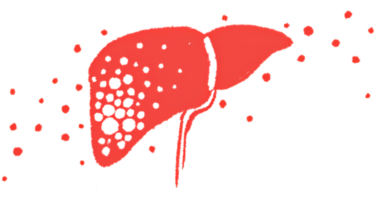We Need to Recognize the Treatment Needs of People with Mild Hemophilia

I am a woman with mild hemophilia. I was angry when I realized that I had gone years without proper diagnosis and treatment. Over the years, I have had multiple bleeds that would have healed more effectively with access to factor replacement products.
Many people mourn the life they could have had with the right diagnosis. I wondered how much easier my life could have been. Could I have played sports at school? Would my cuts have scabbed over? Would I have been in less pain?
A proper diagnosis leads to proper treatment, at least for some people.
Mild hemophilia and inequity
For the longest time, treatment inequities between men and women frustrated me. Men with factor levels that are higher than mine had the correct diagnosis from birth. They had access to factor replacement products and were able to lead an active life with less pain.
I envied men with mild hemophilia. Their condition went unchallenged because of their gender. They did not need to dismantle misconceptions to partner with physicians.
My conversations with men with mild hemophilia were few, but they emphasized the ease with which men sought treatment. Women with mild hemophilia, on the other hand, frequently discussed their fight for basic care.
Men face inequity, too
I recently had multiple eye-opening conversations. I realized that men with mild hemophilia also struggle with treatment access. Some have access to care, but I was shocked to learn that it is not always the case.
I was exploring an online support group. One of the members was told he would only need factor products for a major accident or surgery. I thought, “Wait, that is what women are told. It’s inaccurate.” He shared his struggle with joint issues from years of untreated bleeds.
His situation is similar to mine and reflects the stories of many other women.
Reframing the struggle
There is no doubt in my mind that women face significant barriers to diagnosis and treatment. Women fight the misconception that only men can have hemophilia, but men struggle, too. Women and men with mild hemophilia are dismissed, even when they face microbleeds, bruising, lack of scabs, and other issues.
People with mild hemophilia must be assessed and treated based on their bleeding phenotype (their presentation of bleeding symptoms), regardless of gender. Without proper treatment, bleeding episodes will continue.
Partnering for access to care
Women and men with mild hemophilia need to form alliances and fight for access to appropriate care. Together, we need to help medical professionals understand that individuals with mild hemophilia have bleeding issues. If we unite and work together, our voices will be loud and strong.
Female or male, we need to raise awareness. People with mild hemophilia have bleeding issues and deserve suitable healthcare.
***
Note: Hemophilia News Today is strictly a news and information website about the disease. It does not provide medical advice, diagnosis, or treatment. This content is not intended to be a substitute for professional medical advice, diagnosis, or treatment. Always seek the advice of your physician or another qualified health provider with any questions you may have regarding a medical condition. Never disregard professional medical advice or delay in seeking it because of something you have read on this website. The opinions expressed in this column are not those of Hemophilia News Today or its parent company, Bionews Services, and are intended to spark discussion about issues pertaining to hemophilia.







Leave a comment
Fill in the required fields to post. Your email address will not be published.